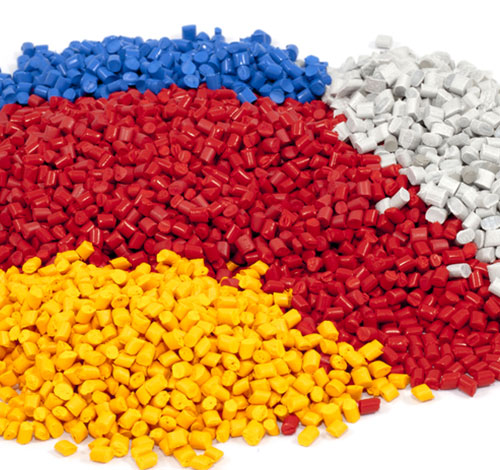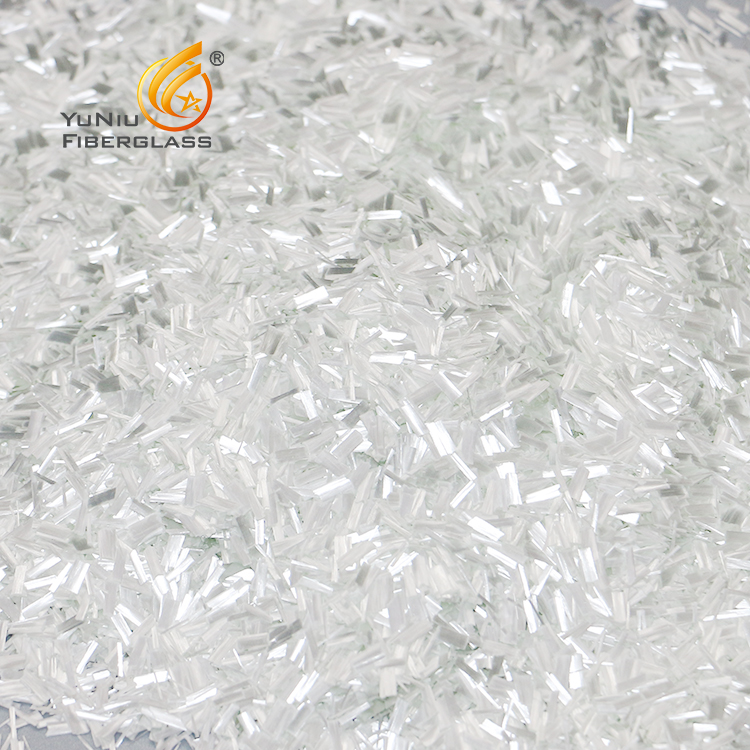With the development of 5G, the hair dryer has entered the next generation, and the demand for personalized hair dryer is also increasing. Fiberglass reinforced nylon(PA) has quietly become the star material for hair dryer casings and the signature material for the next generation of high-end hair dryers.
Fiberglass reinforced PA66 is usually used in the nozzles of high quality hair dryers, which can increase the strength and increase the heat capacity. However, as the functional requirements of the hair dryer become higher and higher, ABS, which was originally the main material of the shell, was gradually replaced by fiberglass reinforced PA66.
At present, the main factors affecting the preparation of high-performance fiberglass reinforced PA66 composites include the length of PA fiberglass chopped strands, the surface treatment of fiberglass chopped strands for PA and their retention length in the matrix.
Then let’s take a look at the production factors of glass fiber reinforced PA66~
length of PA fiberglass chopped strands
When glass fiber is reinforced, the length of PA chopped strands is one of the main factors that determine fiber-reinforced composites. In ordinary short fiberglass reinforced thermoplastics, the fiber length is only (0.2~0.6) mm, so when the material is damaged by force, its strength is basically useless due to the short fiber length, and the purpose of using fiberglass reinforced nylon (PA) is uses the high rigidity and high strength of the fiber to improve the mechanical properties of nylon, so the fiber length plays an important role in the mechanical properties of the product. Compared with the short glass fiber reinforced method, the modulus, strength, creep resistance, fatigue resistance, impact resistance, heat resistance and wear resistance of long glass fiber reinforced nylon have been improved, broadening its application in automobiles, electrical appliances, machinery and military.
Surface treatment of fiberglass chopped strands for PA
The bonding force between fiberglass and matrix is another important factor affecting the mechanical properties of composites. Fiberglass reinforced polymers can only perform well if they form an effective interfacial bond. For glass fiber reinforced thermosetting resin or polar thermoplastic resin composite materials, the surface of the fiberglass can be treated with a coupling agent to form a chemical bond between the resin and the surface of the fiberglass, so as to obtain effective interfacial bonding.
Retention Length of Fiberglass in Nylon Matrix
People have carried out a lot of research on the mixing of fiberglass reinforced thermoplastic resin and the molding process of products. It is found that the length of fiberglass chopped strands in the product is always limited to less than 1mm, which is greatly reduced compared with the initial fiber length. Then, the phenomenon of fiber breakage during processing was studied, and it was found that the processing conditions and various other factors had influence on fiber breakage.
equipment factor
In the design of screw and nozzle, it is necessary to avoid too narrowness and sudden change in structure. If the flow channel is too narrow, it will affect the free movement of glass fiber, which will cause shearing effect and cause breakage; if there is a sudden change in structure, it is very easy to produce The additional stress concentration destroys the fiberglass.
Process factor
1. Barrel temperature
The temperature range used when processing reinforced pellets should be above 280°C.This is because, when the temperature is higher, the viscosity of the melt will be greatly reduced, so that the shear force acting on the fiber is greatly reduced. And the breaking of the fiberglass mainly occurs in the melting section of the extruder. because the glass fiber is added to the melted polymer, the melt is mixed with the glass fiber to wrap the glass fiber, which plays a lubricating and protective role. This reduces excessive fiber breakage and wear of screws and barrels, and facilitates the dispersion and distribution of glass fibers in the melt.
2. Mold temperature
The mechanism of fiberglass failure in the mold is mainly that the temperature of the mold is much lower than that of the melt. After the melt flows into the cavity, a frozen layer is formed on the inner wall immediately, and with the continuous cooling of the melt, the frozen layer is formed. The thickness of the fiberglass continues to increase, so that the intermediate free-flowing layer becomes smaller and smaller, and part of the glass fiber in the melt adheres to the frozen layer and the other end still flows with the melt, thus forming a large shear force on the fiberglass resulting in breakage. The thickness of the frozen layer or the size of the free-flowing layer will directly affect the flow of the melt and the magnitude of the shear force, which in turn affects the degree of damage to the fiberglass. The thickness of the frozen layer first increases and then decreases with the distance from the gate. Only in the middle, the frozen layer thickness increases with time. So at the end of the cavity, the fiber length will return to a longer level.
3. Influence of screw speed on fiberglass length
The increase of the screw speed will directly lead to the increase of the shear stress acting on the fiberglass. On the other hand, the increase of the screw speed can speed up the plasticization process of the polymer, reduce the melt viscosity, and reduce the stress acting on the fiber. This is because the twin screw provides most of the energy required for melting. Therefore, the influence of screw speed on fiber length has two opposite aspects.
4. The position and method of adding glass fiber
When the polymer is melted and extruded, it is generally added at the first feeding port after blending evenly. However, in the process of melt extrusion of fiberglass reinforced nylon(PA), the polymer needs to be added at the first feeding port, and it will be melted and plasticized. After that, the fiberglass chopped strands for PA is added at the downstream feeding port, that is, the subsequent feeding is adopted. This is because if both fiberglass and solid polymer are added from the first feeding port, the fiberglass will be excessively broken during the solid conveying process, and the inner surface of the screw and the machine will also be in direct contact with the fibegrlass, causing serious wear and tear of the equipment.
Post time: Mar-23-2022

